Get your copy at www.socom.mil/FactBook/2022%20Fact%20Book
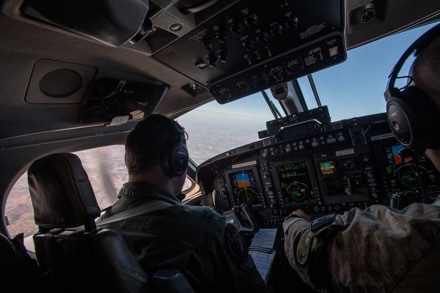
Members of the Canadian Special Operations Forces Command (CANSOFCOM) participated in the first-ever Manned Intelligence, Surveillance and Reconnaissance (ISR) Fundamentals Course held by the 137th Special Operations Group (SOG), Aug. 2-Oct. 25, 2021, at Will Rogers Air National Guard Base, Oklahoma City.
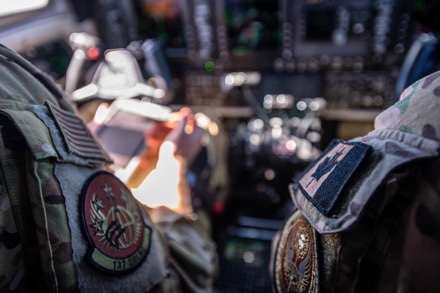
The Canadian aircrew and American instructors collaborated to develop tactics, techniques and procedures (TTPs) for operations with the MC-12W that the CANSOFCOM aircrew could use to further develop a training syllabus for their aircraft.
“The training gained here will be invaluable to developing TTPs and bringing our new aircraft into the service,” said Canadian LCol François Lavertu, Commanding Officer of 427 Special Operations Aviation Squadron. “We are grateful for U.S. Special Operations Command, Air Force Special Operations Command and the 137th Special Operations Wing’s support and training provided to our troops.”
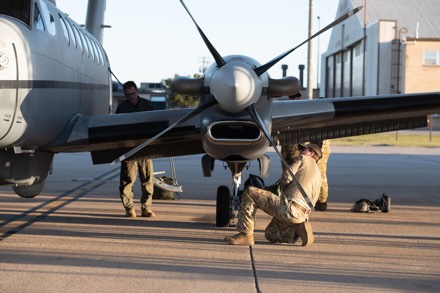
The program covered both air and ground training, incorporating tactical air control party experience with the Canadian aircrew’s exposure to ground tactics, bringing squadrons from around the base together, including: the 185th Special Operations Squadron, the 146th Air Support Operations Squadron, the 137th Special Operations Support Squadron, the 285th Special Operations Intelligence Squadron and the 189th Intelligence Squadron.
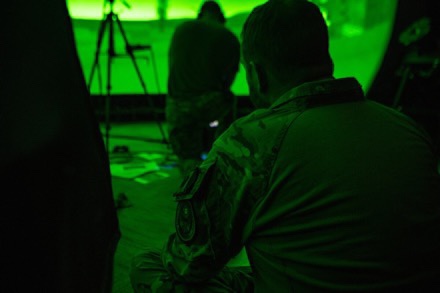
“One of the unique aspects of the courses offered by the 137th SOG is the focused integration of MISR with close air support (CAS) through our MISR management course,” said U.S. Air Force Maj. Karl Hurdle, security cooperation director with the 137th Special Operations Group. “This exposes aircrew to the ground perspective of operating in a two-dimensional battlespace.”
For the aircrew, this perspective helps them understand the platform and how it integrates into a bigger picture.
“This is my first exposure to helping bring a major capability online, and we worked as a team to learn new skillsets and apply them to future roles,” said a CANSOFCOM training participant.
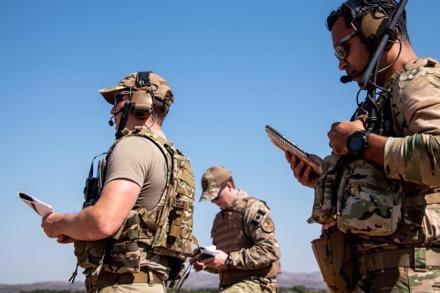
This collaboration is part of the Canadian aircrew’s initial operational training, bringing two years of planning to fruition.
“The 137th Special Operations Wing is uniquely postured to aid in training having stood up our own program under AFSOC less than five years ago,” said U.S. Air Force Maj. Korey Larson, operations officer for the 137th SOG, Detachment 1. “With a two-week academic phase and three flying phases, our expert instructors in both the ground and air provided these aviators with perspective on the mission that other wings are not able to do without outsourcing the training. To my knowledge, the 137th Special Operations Wing is one of the only ones that has both a MISR squadron and an air support operations squadron assigned and collocated, making for much more effective operators with this enhanced integration.”
With six NATO partner nations participating in various training programs hosted by 137th Special Operations Wing units this year, the training marked a new addition to the already extensive training catalogue. Squadrons from around Will Rogers ANGB worked in concert to create a multi-functional and international battlespace to develop effective training for these aviators.
“The CANSOFCOM aviators had backgrounds in multiple fixed- and rotary-wing aircraft, which allowed for great feedback to our instructor cadre on the course, and we will implement many of the recommendations that they provided for any future training with foreign partners,” said Larson. “Sharing our unique program and honing training with this iteration will allow the wing to have lasting effects on both partner force and United States Combined Operations throughout the world.”
Story by TSgt Brigette Waltermire
137th Special Operations Wing Public Affairs
EGLIN AIR FORCE BASE, FLORIDA (AFRL) – The Air Force Rapid Dragon Program, a fast-paced experimentation campaign led by the Air Force Strategic Development Planning and Experimentation (SDPE) office, successfully completed its final flight test December 16 at the Eglin AFB Overwater Test Range.
The flight test capstoned a 2-year series and culminated in a live fire of a current inventory cruise missile armed with a live warhead. Rapid Dragon demonstrates the ability to employ weapons using standard airdrop procedures from cargo aircraft using the Rapid Dragon Palletized Weapon System.
The program name is derived from a thousand-year-old Chinese military designed crossbow catapult that launched multiple crossbow bolts with the pull of a single trigger, raining destruction down on armies from tremendous ranges. These lethal devices were called Ji Long Che—Rapid Dragon Carts. Today, the Rapid Dragon concept is changing the game again, this time as an airborne delivery system for U.S. Air Force weapons. And like its namesake, these palletized munitions promise to unleash mighty salvos en masse on distant adversaries.
During the December test, an MC-130J flown by an Air Force Special Operations Command operational flight crew, received new targeting data while in flight which was then routed to the cruise missile flight test vehicle (FTV). The aircraft agnostic Battle Management System’s inflight receipt and upload of the new targeting data into the FTV was a first-time achievement with a live cruise missile.
Once inside the drop zone over the Gulf of Mexico, the MC-130J aircrew airdropped a four-cell Rapid Dragon deployment system containing the FTV and three mass simulants, which were sequentially released from the palletized deployment box while under parachute. Safe separation from the deployment box and weapon deconfliction was demonstrated using an unconventional deployment method (nose-down vertical orientation). Immediately after the vertical release, the FTV deployed its wings and tail, achieved aerodynamic control, ignited its engine, performed a powered pull-up maneuver, and proceeded toward its newly assigned target. The cruise missile successfully destroyed its target upon impact.
The next step for the Rapid Dragon Program will be a live-fire test with a cruise missile from a C-17 in Spring 2022, demonstrating the aircraft agnostic capabilities of the Palletized Weapon System. Of note, the new retargeting methodology developed by the Rapid Dragon team is designed to be transferrable to other strike and cargo platforms, potentially increasing the lethality of those aircraft. Lastly, a follow-on program will look at expanding the Rapid Dragon carriage portfolio to include additional weapon systems and multiple effects capabilities, as well as continuing the maturation of the system, taking it from a developmental prototype to an operational prototype over the next two years.
“This type of experimentation campaign, that address capability gaps and demonstrates transformative efforts, helps us shape future requirements and reduces timeline to fielding,” said Maj. Gen. Heather Pringle, Air Force Research Laboratory commander, adding “This approach ultimately enables a rapid fielding alternative to traditional lengthy acquisition timelines.”
In addition to SDPE and AFSOC, demonstration participants included the Naval Surface Warfare Center-Dahlgren; Standoff Munitions Application Center; Lockheed Martin Missiles and Fire Control; Systima Technologies; Safran Electronics & Defense, Parachutes USA, and R4 Integration, Inc.
Agility and collaboration enabled this government/industry team to go from a design to a system level flight test in 10 months, followed by a live fire five months later. During those last five months, Rapid Dragon has conducted five system level flight tests using three different aircraft (MC-130J, EC-130SJ, and C-17A).
“Rapid Dragon is a prime example of a government/industry partnership that embraces this acceleration mindset, building a community of subject matter experts and executing an aggressive, but well-thought-out, experimentation campaign,” said Dr. Dean Evans, SDPE’s Rapid Dragon Program Manager. This sentiment was echoed by Aaron Klosterman, SDPE’s Experimentation & Prototyping Division Chief when he said, “This accomplishment is a testament to what an agile U.S. Air Force and industry team can do when it is empowered to do business differently.”
The successful Rapid Dragon experiments pave the way for U.S. and allied mobility platforms to dramatically increase fires available for a combatant commander to place more adversary targets at risk.
“Rapid Dragon was able to accelerate development by building a broad and strong team. We were committed to a ’test often/learn-fast’ culture, dedicated to experimenting frequently and taking calculated risks. In addition to the MAJCOMs and Air Staff, the Rapid Dragon team included the Developmental Test (DT) and Operational Test (OT) communities, the aircraft and weapons Program Offices, and the mission planners. This collaboration from the onset streamlined the process and accelerated development, involving groups from the program inception that are not normally included at the very early stages, and that has made all the difference,” Evans added.
By Air Force Research Laboratory Public Affairs
SOFWERX has put out word that the USSOCOM Science and Technology Small Business Innovation Research (SBIR) 22.1 submissions will open 12 January 2022.
Special Areas of Interest
PHASE I:
SOCOM221-001: Low SWaP Tactical Ultra-Secure Communications System
DIRECT TO PHASE II:
SOCOM221-D002: Ultra-Compact Long Range Machine Gun Optic
SOCOM221-D003: Miniature Aiming Ranging Laser
SOCOM221-D004: Advanced Precision-Variable Power Scope
(Link to all DoD SBIRs www.dodsbirsttr.mil)
SBIR Process Timeline
01 December 2021: Topics and instructions posted
12 January 2022: DoD begins accepting proposals
TBD: Virtual Industry Q&A sessions
10 February 2022: Solicitation closes and proposals evaluations/award starts
By 6 months after award: Phase I complete
For Phase 1 Topics only: If appropriate, an RFP may be provided with a typical 30-day proposal timeline at or around the end of Phase 1
To lean more visit events.sofwerx.org/sbir22.1.

The British Army has unveiled the cap badge of The Ranger Regiment.
Who are The Ranger Regiment?
The Ranger Regiment is an important contribution of the Army’s new global posture and was established as part of Future Soldier, the biggest transformation of the British Army in over 20 years.
It is part of the newly established Army Special Operations Brigade. It will be routinely deployed alongside partner forces around the world to counter Violent Extremist Organisations and hostile state threats.
The Regiment, initially announced earlier this year, will stand-up on 1 December 2021, commencing cadres and training for its four battalions.
The Ranger Regiment cap badge
The Ranger Regiment is very proud of its new cap badge which takes inspiration and spirit from the Peregrine Falcon; fast, agile and fiercely loyal to its partner, it operates around the world in all environments including deserts, mountains and cities. It has been designed to demonstrate a new capability for the Army.
It follows a long history of birds being used as emblems and logos around the world. Peregrine derives from the medieval Latin word ‘peregrinus’ which means wanderer. It is the most geographically dispersed bird of prey, and can be found on every continent, less Antartica. The Peregrine Falcon is also the fasted bird on the planet, with a diving speed of over 200 miles per hour.
While many regiments have a cloth badge for officers and a metal badge for soldiers, everyone serving in the Ranger Regiment will wear a metal badge, irrespective of rank.
Beret and Belt

A unique gun-metal grey colour has been chosen for the regimental beret and stable belt, taking inspiration from the Peregrine Falcon’s grey plumage.
Stable belts will fasten at the front with a round metal buckle bearing the Peregrine Falcon insignia from the cap badge.
Army Special Operations Brigade Heritage
The Army Special Operations Brigade will contribute to collective deterrence by training, advising and if necessary, accompanying partner forces across the world.
The design for the Army Special Operations Brigade formation flash is inspired by the badge of the Special Service Brigade. The Special Service Brigade was a formation of the British Army during the Second World War.
On 17 July 1940, Prime Minister Winston Churchill issued a directive to wage irregular warfare. This established the Special Operations Executive (SOE) and a Directorate of Combined Operations, and in the Autumn of 1940 a Special Service Brigade was formed to command the numerous new Army and Royal Marines commando units. The staff of this new Brigade wore a flash featuring two Fairbairn-Sykes fighting knives.

Members of the new Army Special Operations Brigade will wear the updated version of the wartime Special Service Brigade flash in acknowledgment and recognition of this shared heritage and history.
Click here to discover more about Future Soldier.
ABERDEEN PROVING GROUND, Md. (Nov. 22, 2021) — The United States Special Operations Command (USSOCOM)-led Tactical Assault Kit (TAK) Product Center, in partnership with the Army, will host the eighth annual TAK Offsite in Colorado Springs, Colorado, from Nov. 30 to Dec. 3.
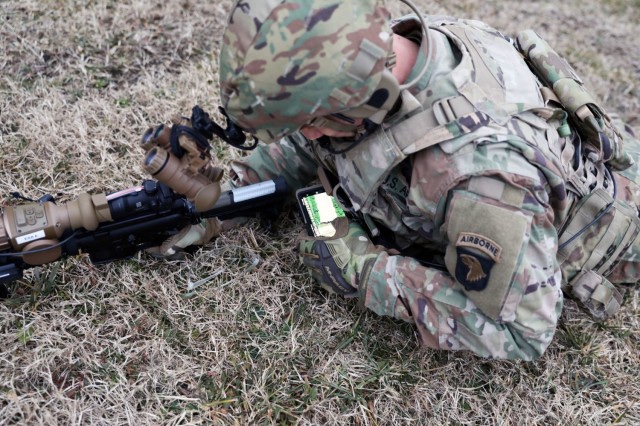
TAK is a map-based software application that enables coordination among operational users in the Department of Defense and other federal agencies with features such as positioning data, chat, mission planning and shared overlays. It is compatible with Android, Apple iOS and Windows.
“The TAK offsite is an excellent opportunity to collaborate with mission partners across various operational use cases to share feedback, to expand the capability, and to continuously make the products better,” said Bill Newmeyer of the Army’s Command, Control, Computers, Communications, Cyber, Intelligence, Surveillance, and Reconnaissance (C5ISR) Center, where the TAK Product Center resides.
The C5ISR Center, part of Army Futures Command, supports the TAK development and user community by providing engineering expertise for the development and technical management of the core TAK software platforms as well as through participation in a Configuration Steering Board (CSB). Program Executive Office – SOF Digital Applications, part of USSOCOM, funds the product center, chairs the Configuration Steering Board and sponsors the TAK Offsite.
“The TAK community has grown from a dozen users to a hundred users to now over 200,000 users,” said Ryan McLean, TAK Product Center director. “As more users adopt TAK, we’ve continued to make TAK products more widely available. The TAK CSB amplifies and extends that growth through events such as the TAK Offsite.”
The TAK Offsite brings value to all stakeholders – users, developers, program managers, and even to people and organizations new to TAK. Real-world users attend and learn about new features and integration possibilities within TAK, while developers learn about how the TAK application programming interface (API) and core capabilities are constantly improving. Many program managers also attend the event to promote their initiatives that use TAK.
“TAK has been successful largely due to our open-architecture, open-source model that’s very developer-friendly,” said McLean. “That means staying synchronized with industry and listening to the needs of equipment providers and solution builders. TAK grows and improves not because of TAK alone, but because of TAK’s ability to break down the old barriers to system integration.”
As with previous years, the 2021 TAK Offsite will foster efforts to get more feedback to improve platforms and generate cross-team collaboration. This confluence of minds spurs the new waves of innovation in TAK development, integration, and use cases.
“This is a can’t-miss event for anyone developing situational awareness and geospatial capabilities. Anyone who attends should expect full immersion in the TAK community across four days packed with content,” said McLean. “If you use TAK, if you develop TAK, if you field capabilities that use TAK, or if you just want to learn about TAK, this is where you need to be.”
To register, attendees must create a TAK.gov account at tak.gov. Attendees may then register for the event under the Events page of TAK.gov. Questions should be directed to support@tak.gov with questions.
HURLBURT FIELD, Fla. – Members of the 34th Special Operations Squadron recently deployed to Robins Air Force Base, Georgia, to validate the unit’s ability to generate combat capability under the new Special Operations Force Generation model.
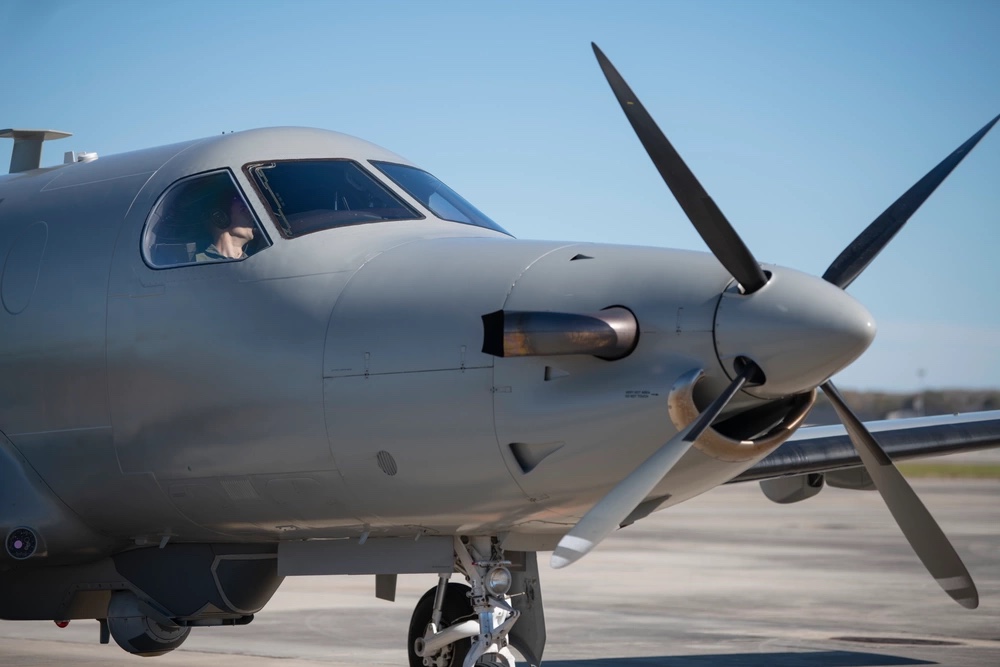
SOFORGEN replaces the current Air Expeditionary Force construct with a 20-month cycle, comprised of four, five-month phases of readiness. The phases are:
Available to Commit: Airmen have achieved peak readiness and are either deployed or ready to deploy.
Reset: Unit has returned from deployment or is removed from the “available to commit” phase. Training focus is on the individual (aircrew upgrade, PME, schools to develop technical and leadership skills).
Prepare: Build toward peak unit readiness while shielded from deployment. The focus is on developing squadron flights as a core unit of action and flight commanders as competent and credible leaders.
Ready: Achieve a high level of readiness for deployed taskings and experiment with tactics, techniques and procedures and concepts of operation for competition and conflict mission sets.
“The exercise is validating all of the training we’ve been doing over the past several months in the ‘prepare’ phase of FORGEN,” said Capt. Austin, commander of the deployed flight. “It’s important because we are exercising our ability to plan for short-notice contingencies while being able to deploy and execute to those at the flight level.”
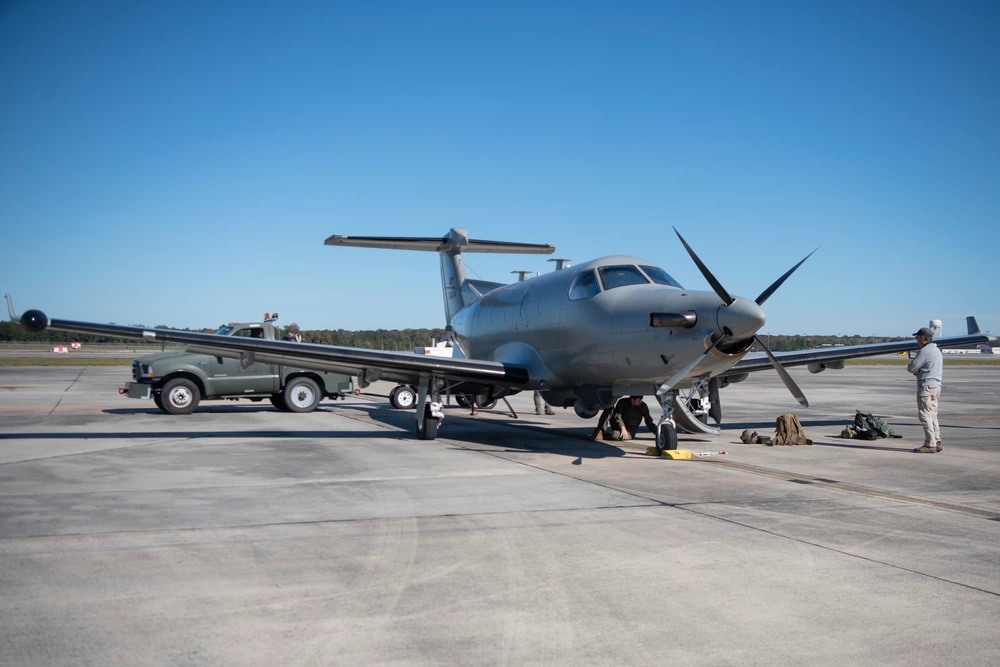
Members of the 34th SOS conducted in-depth planning in the weeks prior to execution. The planning portion of the exercise was kicked-off with academics presented by weapons officers from the 14th Weapons Squadron, also located on Hurlburt Field. From there, members split into mission planning cells, ultimately briefing the “Air Boss”, their commander, Lt. Col. Sarah Brehm.
Another unique aspect of this validation exercise and the 34th’s efforts to align under the SOFORGEN construct is that critical support functions such as intelligence or Aircrew Flight Equipment are being assigned to specific flights rather than the squadron-at-large.
“We have had VALEXs for every deployment,” said 1st Lt. Cody, an intelligence officer assigned to the 1st Special Operations Support Squadron’s Intelligence Flight who deployed to Georgia as the Special Operations Tasking Unit intelligence lead. “The difference this time is that we are essentially trying to package it in a way that enables the SOFORGEN construct. With SOFORGEN, SOTUs are essentially pre-packaged groups that are able to be deployed or move around and perform a mission function on their own.”
A critical component of the SOTU, and any U-28A mission, is communications. Technicians from the 1st Special Operations Communications Squadron assigned to the 34th SOS “provide network services to the flyers and mission commanders,” said Staff Sgt. Brant, a communications supervisor with the 1st SOCS. “This enables them to properly surveil the mission areas while making the best possible decisions.”
The exercise also tested Agile Combat Employment for the U-28A unit. Specifically, the squadron wanted to test its ability to conduct combat operations from dispersed airfields. In this case, the unit was able to rapidly deploy to Robins AFB, set up and begin operations. In a real-world application, the U-28A can leverage its ability to take-off and land on short runways and semi-prepared surfaces to successfully conduct missions virtually anywhere.
While this exercise might be over, the transformation from the “AFSOC We Needed” to the “AFSOC We Will Need” continues. Proactive and collaborative efforts at the unit level will help advance that transformation and ensure AFSOC remains ready and relevant well into the future.
“With SOFORGEN, members and units have more time to not only become proficient and ready for historical mission sets like Violent Extremist Organizations,” said Lt. Col. Sarah Brehm, 34th SOS commander. “We also have the breathing space for what comes next.”
The 34th SOS is one of two U-28A squadrons assigned to Hurlburt Field. AFSOC fielded the U-28A fleet through the purchase of commercially available aircraft and subsequent military modification to include tactical communications capabilities, aircraft survivability equipment, electro-optical sensors, and advanced navigation systems. The advanced radio-communications suite is capable of establishing U.S. Department of Defense and NATO datalinks, delivering full-motion video, and transmitting secure voice communications. The U-28A benefits from outstanding reliability and performance, and the aircraft is capable of operating from short runways and semi-prepared surfaces.
Story by 2nd Lt. Jason Barkey
Photo by Airman 1st Class Amanda Flower-Raschella
1st Special Operations Wing Public Affairs